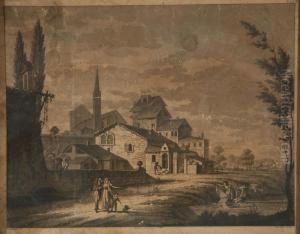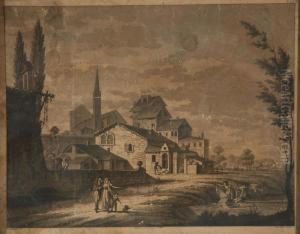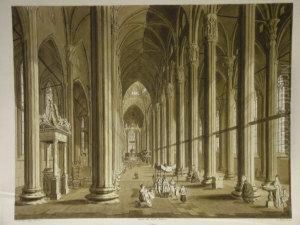Luigi Rados Paintings
Luigi Rados was an Italian engraver and painter, born in Milan in 1773. Although not as widely recognized as some of his contemporaries, Rados carved out a significant niche for himself in the art world of the 18th and early 19th centuries. His work is characterized by its meticulous detail and the skillful use of engraving techniques to create depth and texture. Rados was particularly noted for his ability to capture the essence of his subjects, ranging from portraits to landscapes, and for his contributions to the preservation and dissemination of classical and contemporary artworks through his engravings.
Rados received his initial training in Milan, where he was born and raised. Early in his career, he was influenced by the Neoclassical movement, which was prevalent in Europe at the time. This influence is evident in the precision of his lines and the clear, structured compositions of his works. Despite the dominant trends, Rados managed to infuse his works with a personal touch that set them apart. He was adept at both copperplate engraving and etching, techniques that allowed him to produce works with fine detail and subtle gradations of tone.
Throughout his career, Luigi Rados was involved in several important projects that contributed to his reputation. He created engravings after famous paintings by artists such as Raphael and Titian, making these masterpieces accessible to a wider audience. His works were collected and admired by art connoisseurs across Europe, and they played a role in the spread of Neoclassical aesthetics. Rados was not only a talented engraver but also a respected teacher, passing on his skills and knowledge to a new generation of artists.
Despite his contributions to the art world, Luigi Rados remains a somewhat obscure figure in art history. His death in 1840 marked the end of a career that had spanned over six decades, during which he had witnessed and adapted to significant changes in artistic styles and techniques. Today, his engravings serve as a testament to the skill and dedication of artists in the era before the widespread adoption of photographic reproduction methods. Rados' work continues to be studied and appreciated by those interested in the evolution of engraving and in the Neoclassical period in general.


